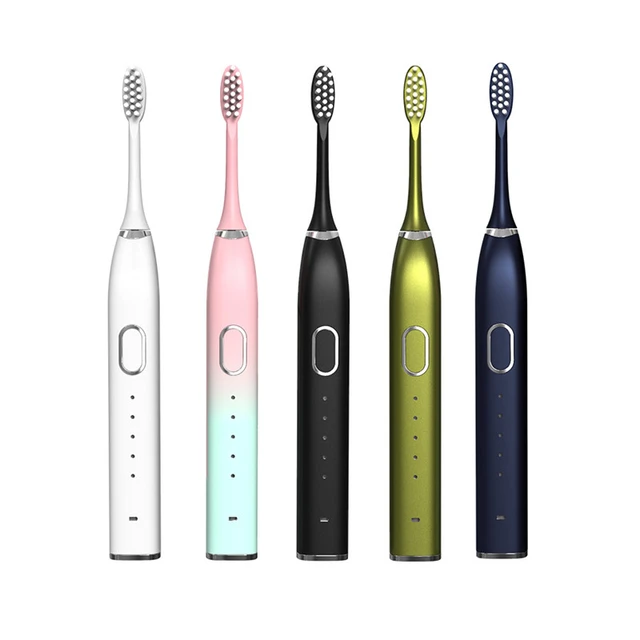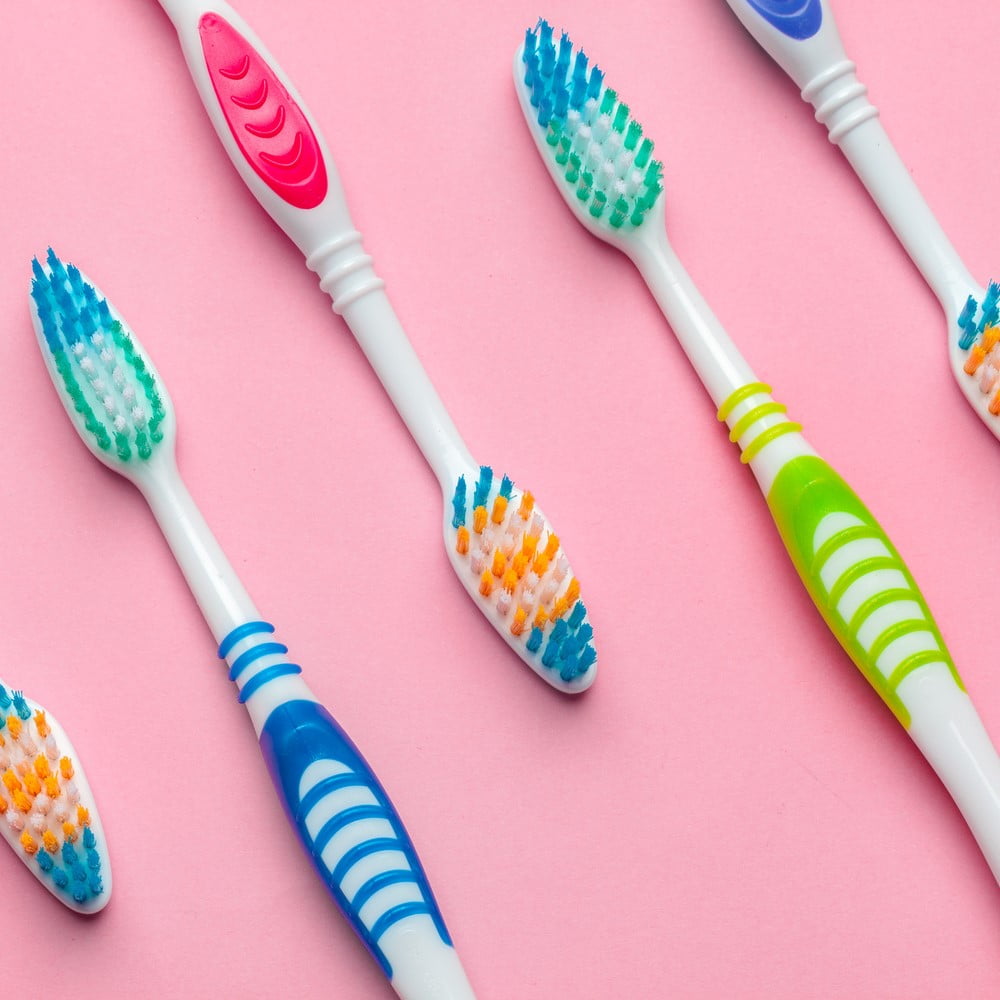The Importance
Knowing when to change toothbrush after strep
Regular toothbrush replacement is key to oral health. Especially after strep throat, it’s vital to update your oral care tools. Old toothbrushes have worn bristles that don’t clean well. Plus, they can hide strep-causing bacteria even after illness.

Overused or old toothbrushes may scratch your gums. This can make them sore and more open to infections. They also become less effective. When bristles fray, they can’t reach tiny gaps between teeth. This leaves plaque and food behind, leading to decay.
Experts like the American Dental Association suggest a new toothbrush every 3 to 4 months. Strep throat or similar illnesses mean you should change it even sooner. Swapping out your toothbrush can stop germs from spreading and safeguard your health.
Look for signs like splayed bristles or color changes. These are clues that it’s time for a new toothbrush. Don’t wait for illness to act – staying proactive keeps your mouth at its cleanest.
Changing your toothbrush can also lift your oral hygiene routine. It ensures your teeth get the thorough clean they need. Keeping bristles fresh allows for effective plaque removal and fresher breath.
In summary, change your toothbrush regularly for optimal dental health. Post-strep, do it promptly to avoid re-infecting yourself. This habit is a simple step towards keeping your smile healthy and bright.
Identifying the Right Time to Replace Your Toothbrush
Knowing when to get a new toothbrush is crucial for dental health. Look for these signs:
- Bristle Wear: If bristles are frayed, they can’t clean teeth well. This means it’s time for a new brush.
- After Illness: Post-strep or other infections, switch out your toothbrush to avoid re-infection.
- Every 3-4 Months: Even if bristles look fine, replace your toothbrush quarterly. This follows dental advice.
- Color Change: Some toothbrushes have color indicators. When colors fade, it’s time for a change.
- After Usage Increase: If you brush more than twice a day, like after every meal, you may need a new toothbrush more often.
Check your toothbrush often and act when you see these signs. A timely replacement means better oral hygiene and health.
Consequences of Not Replacing Your Toothbrush After Strep
Neglecting to change your toothbrush after strep can lead to several dental health issues. Firstly, the risk of re-infection looms large. Even after you recover from strep throat, the bacteria can linger on the bristles of your toothbrush. Using this contaminated brush could reintroduce the strep bacteria into your mouth, making you sick again.
Secondly, an unchanged toothbrush could become a breeding ground for more bacteria. Not just the strep bacteria, but other harmful germs might find a home in the moist environment of the bristles. This kind of exposure can contribute to additional oral health troubles, some potentially serious.
Another consequence is the impact on overall oral hygiene. A worn-out toothbrush won’t do a good job cleaning your teeth. As a result, plaque and food particles can more easily build up between teeth. These buildups can lead to cavities or gum disease over time.
Furthermore, there’s a threat of cross-contamination. If your toothbrush is a carrier of the strep bacteria, it could spread to other toothbrushes nearby. This could potentially make your family members or housemates sick if they come in contact with your brush.
Finally, your toothbrush becomes less effective if it’s not replaced regularly. Its ability to remove plaque declines, meaning that even if you avoid re-infection, you’re still not maintaining the best possible oral hygiene.
Remember, it is generally recommended to replace your toothbrush every 3 to 4 months. After strep, this should be sooner to ensure oral health stays optimal and to prevent the spread of infection.
 Understanding Strep Throat and Its Impact on Oral Hygiene
Understanding Strep Throat and Its Impact on Oral Hygiene
Strep throat is a common infection caused by bacteria. It can be painful and affect the throat and tonsils. This bacteria can linger on objects like toothbrushes. Using a contaminated toothbrush can put you at risk of getting strep throat again. Strep throat can spread easily through saliva. Sharing a toothbrush could transfer the illness to others. Good oral hygiene is key to preventing the spread of strep. This includes changing your toothbrush after an illness. It’s not just about comfort, it’s about safety. Clean brushes mean fewer bacteria and a lower chance of reinfection. Remember, when brushing, replace your toothbrush after strep to keep your mouth healthy.
Electric vs. Manual Toothbrushes: Replacement Guidelines
Whether you use an electric or manual toothbrush, replacing it on time is key for oral health. Here’s what you need to know for each type:
- Manual Toothbrushes: These need a replacement typically every 3 to 4 months. Look for signs of wear like frayed bristles or a decrease in cleaning effectiveness. If you brush more aggressively, you might need to replace your toothbrush more often to ensure your teeth and gums stay healthy.
- Electric Toothbrushes: The head of an electric toothbrush should also be changed every 3 to 4 months. Since electric toothbrush heads can be more pricey, it’s a good idea to stock up during sales. This means you always have a replacement on hand when it’s time for a change. Remember, worn-out bristles won’t clean teeth well, no matter if they’re on a manual or electric brush.
Specifically, after recovering from illnesses like strep throat, it’s crucial to replace your toothbrush immediately. This prevents the spread of bacteria and ensures better oral care. If you share a toothbrush holder with others, advise them to replace theirs too as a precaution. This will minimize the risk of cross-contamination within the household.
Proper oral care goes beyond brushing. Storing your toothbrush properly — upright and allowing it to air dry — is essential. Avoid covering the brush or keeping it in a closed container. This practice helps prevent bacteria growth.
In conclusion, stick to the 3-to-4-month rule for toothbrush replacement. Keep an eye out for bristle wear and have spares ready. After any illness, especially strep throat, replace your toothbrush to keep your mouth germ-free and healthy.
How to Properly Sanitize Your Toothbrush
Maintaining a clean toothbrush is essential for oral hygiene. Here are simple steps to sanitize your toothbrush properly:
- Rinse after use: Always rinse your toothbrush with tap water post-brushing to remove debris.
- Soak in mouthwash or hydrogen peroxide: A few minutes in an antimicrobial solution can reduce germs.
- Let it air-dry: Store your toothbrush upright in an open area to dry fully.
- Keep it separate: Avoid cross-contamination by not sharing or touching another’s toothbrush.
- Replace after illness: After strep or any sickness, get a new toothbrush immediately.
- Avoid containers: Don’t store in closed spaces which can encourage bacterial growth.
For deep cleaning, you can also use UV toothbrush sanitizers. These devices use ultraviolet light to kill bacteria.
Remember, while cleaning extends its life, you should still change your toothbrush every 3-4 months. After strep throat, replace it right away. This keeps your hygiene top-notch and lowers infection risks.
Dental Health and Strep Throat Recurrence
Strep throat can recur after initial recovery. Poor dental hygiene may contribute to these repeat infections. A toothbrush contaminated with strep bacteria is a risk factor. It can reintroduce the bacteria into your mouth. This can lead to another round of illness.
To protect your dental health, replace your toothbrush after strep throat. This simple act can prevent recurrence. It stops the cycle of infection at its source. A fresh toothbrush means a clean start for your oral hygiene. It is a shield against strep throat’s return.
Strong dental health practices support your body’s defenses. They help fight off infections like strep throat. Keep your immune system strong with good oral care. This includes regular toothbrush changes.
Remember to watch for signs that your toothbrush needs replacing. Don’t wait for strep symptoms to reappear. Take action to maintain cleanliness and health in your mouth.
 FAQs About when to change toothbrush after strep
FAQs About when to change toothbrush after strep
When it comes to toothbrush hygiene post-strep throat, many common questions arise. Here are some frequently asked questions and their concise answers to guide you in maintaining optimal oral health:
- How soon should I change my toothbrush after strep throat?
Replace your toothbrush immediately after recovering from strep throat to prevent re-infection.
- Can I just clean my toothbrush instead of replacing it?
It’s safer to replace the toothbrush entirely to ensure all strep bacteria are gone.
- What if my toothbrush looks fine, should I still change it?
Yes. Looks can be deceiving, and bacteria can hide in bristles, so it’s best to change it.
- Does the toothbrush type affect when to replace it after being sick?
No matter manual or electric, you should replace the brush or head after illness.
- Can boiling water disinfect my toothbrush?
Boiling may kill bacteria, but replacing the toothbrush is still the best option after sickness.
- Is it okay to share a toothbrush with family after strep?
Never share your toothbrush. It can spread strep and other germs.
- How does keeping a toothbrush in the bathroom affect its hygiene?
Bathrooms can harbor bacteria. Store your toothbrush upright and let it air dry to stay clean.
- How often should I change my toothbrush?
Change it every 3 to 4 months, and always after an illness like strep throat.
- What’s the best way to store my toothbrush?
Keep it upright in a holder that allows the brush to air dry.
- Can a dirty toothbrush make you sick?
Yes, it can harbor harmful germs that may lead to oral infections or other sicknesses.
Changing your toothbrush following an illness such as strep throat is a critical step in maintaining your dental health and avoiding re-infection. Being diligent about your toothbrush’s condition and hygiene will contribute significantly to your overall oral care routine.

